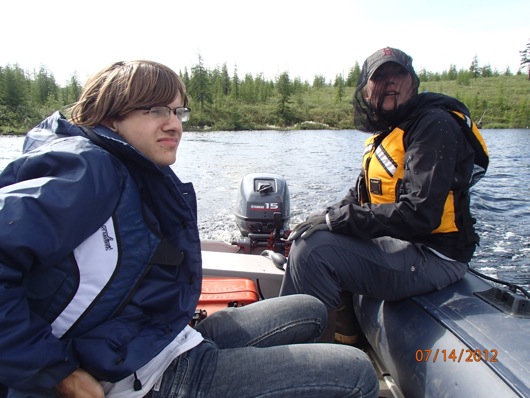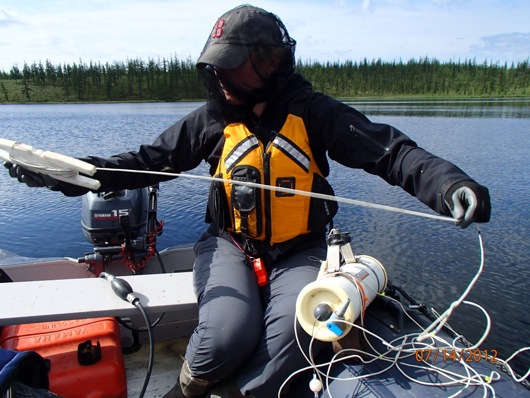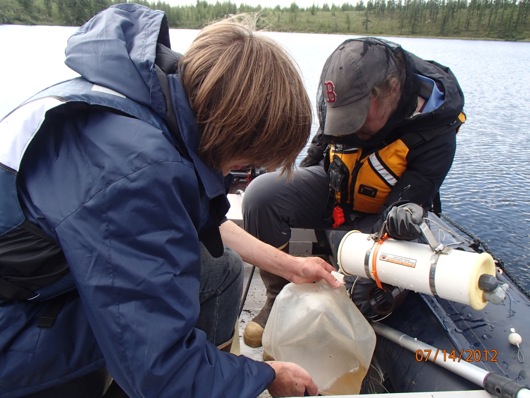(Mark Paricio is a PolarTREC Teacher accompanying the Polaris Project this summer. To read all of Mark’s journals, go to: http://www.polartrec.com/expeditions/siberian-arctic-systems-study )
The university students of the Polaris Project each work on independent research. Periodically, I will share the stories of these remarkable young people.
Vasily Lebedev – Graduate Student at Moscow State University
Along with Dr. Karen Frey of Clark University, I went with Vasily on our motorized raft on Shuch’ye Lake to collect water samples.

Vasily Lebedev and Dr. Karen Frey boat out to the sampling site on Shuch’ye Lake.
Vasily needed to collect water samples from both the surface of the lake and from a depth of 8 meters, near the bottom of the lake. After rinsing his container three times as the sampling protocol requires and carefully pouring out the water on the opposite side of the raft, Vasily collected 17 liters of water in his first container.
Collecting samples from 8 meters below the surface required using a specialized piece of equipment called a Van Dorn bottle, which is essentially a large tube with two spring-loaded end caps. The Van Dorn bottle is lowered (opened on each end) on a measured rope to the desired depth and a weight is dropped down the rope which triggers the end caps to close the bottle with the water inside. Karen and Vasily used this method to collect about three liters of the deeper water.

Dr. Karen Frey prepares the Van Dorn bottle for deep water sampling.

Vasily and Karen work together to fill a sampling jug with water from the Van Dorn bottle.
After collecting the two different samples, Vasily and I walked the half-mile back to the science station carrying these very cold water containers. I magnanimously offered to carry the three liter sample, letting him carry the 17 liter sample! He IS much younger and stronger…
Vasily’s Research Question
Vasily’s research is designed to determine the size, shape, and aggregation of the organic carbon that is dissolved in the lake waters. Since water is too heavy to transport, he will treat the water here at the science station, absorbing any carbon particles onto a substrate. He will take the substrate back to Moscow State University, coax the carbon particles back off the substrate, and then using atomic force microscopy (AFM), he will determine the size distribution and the shape of the carbon particles when placed on the surface of an extremely flat glass.
I remember meeting Vasily on the morning we arrived in Moscow from New York. During lunch, he gave me the most concise and understandable description of AFM that I had ever heard. He is a remarkably bright and curious young man who will be a great science colleague of the other students here at the Polaris Project!
Stay curious my friends! – Mark Paricio



